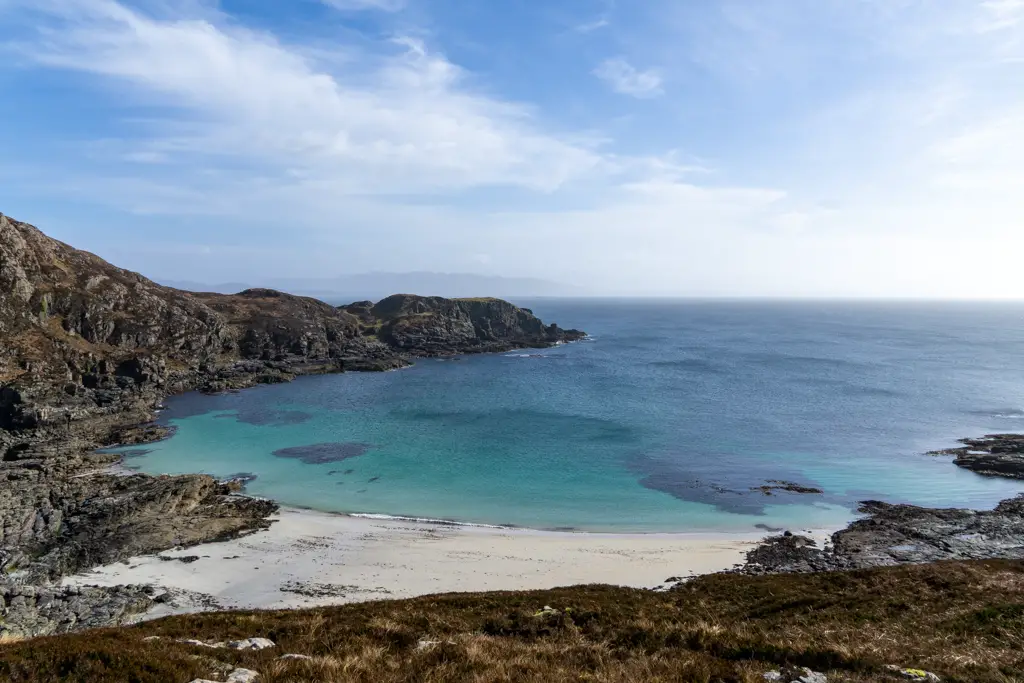The Scottish Highlands and Islands are home to a vast array of jaw-dropping scenery. Craggy peaks and desolate moors dominate the interior of the region but surprisingly, Scotland’s coastline plays host to world-beating beaches. Although it is the island of Harris which tends to glean the most attention for its coastline, did you know that some of Scotland’s best beaches are on the Isle of Skye?
Although the Misty Isle isn’t famed for its seaside setting, there are some truly charming coastal spots on Skye. With everything from bays hugging epic Munros to shores formed purely of crushed seaweed, the Isle of Skye’s beaches are every bit as dramatic as the rest of the island. In this post, I’ve listed my three favourites as well as including a few other notable mentions that you won’t want to miss.
This post contains affiliate links. If you use them, I will receive a small commission at no extra cost to you (and be eternally grateful)!
Read more: (opens in new tab)
- Incredible Walks on the Isle of Skye
- Isle of Skye: Best Hostels on the Island
- Wildlife on the Isle of Skye
Map of the Isle of Skye’s Beaches
Top 3 Beaches on the Isle of Skye
1. Coral Beach
- Beach type: Coral
- Great for: Campers, intrepid adventurers, photographers
- Accommodation nearby: Dunvegan Castle Keepers Cottage
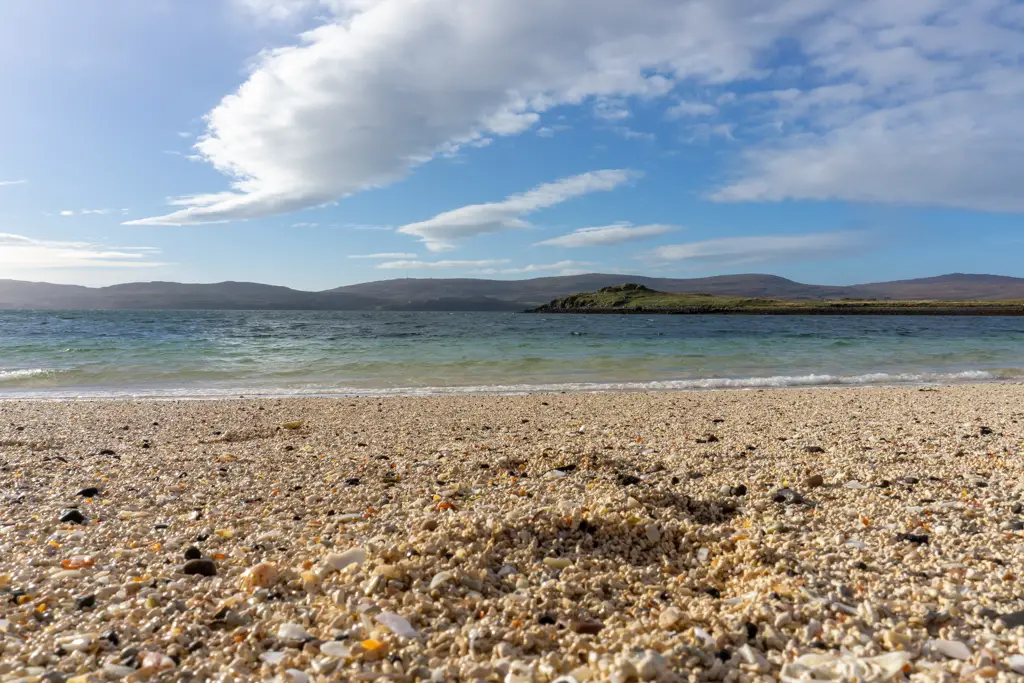
Located in Claigan, north of Dunvegan lies the wonderful Coral Beach. Unlike most beaches on the Isle of Skye, Coral Beach is not made of sand. And interestingly, it’s not made of coral either! The small, coral-like fragments that mark the shoreline are made up of bleached red Coraline, a species of algae that forms coral-like structures.
This species of algae grow on the reef by the Island of Lampay which sits around 150 metres offshore. Once it breaks off, it washes up on Coral Beach. If you can time your visit with when the tide is out, it is possible to walk across to Lampay via an algae causeway!
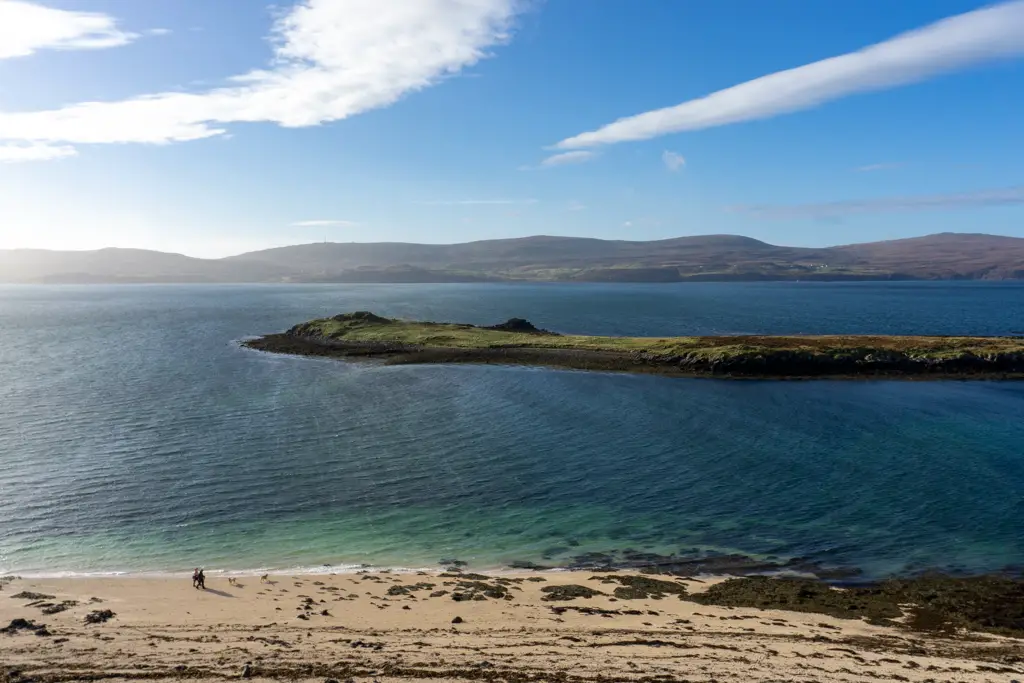
Coral Beach is also known as the Isle of Skye’s white beach. The bleached fragments on the shore glisten spectacularly in the sun and sit in direct contrast to the turquoise colour of the sea on a summers day. There are also a number of rock pools scattered along the shore which are fun to explore. The Coral Beach is characterised by large black volcanic rocks. On the day we visited, it really reminded me of the beaches of San Cristobal in the Galapagos, albeit not quite as warm…
The scenery wouldn’t be complete without the small hill which overlooks the shingle, known as the ‘ghrobain’. Hike up to the top for some of the best views of the waves lapping the shore. The hill and surrounding green area are popular spots with campers and offer a lovely setting in which to wake up in. Be warned though, it can get very windy here!
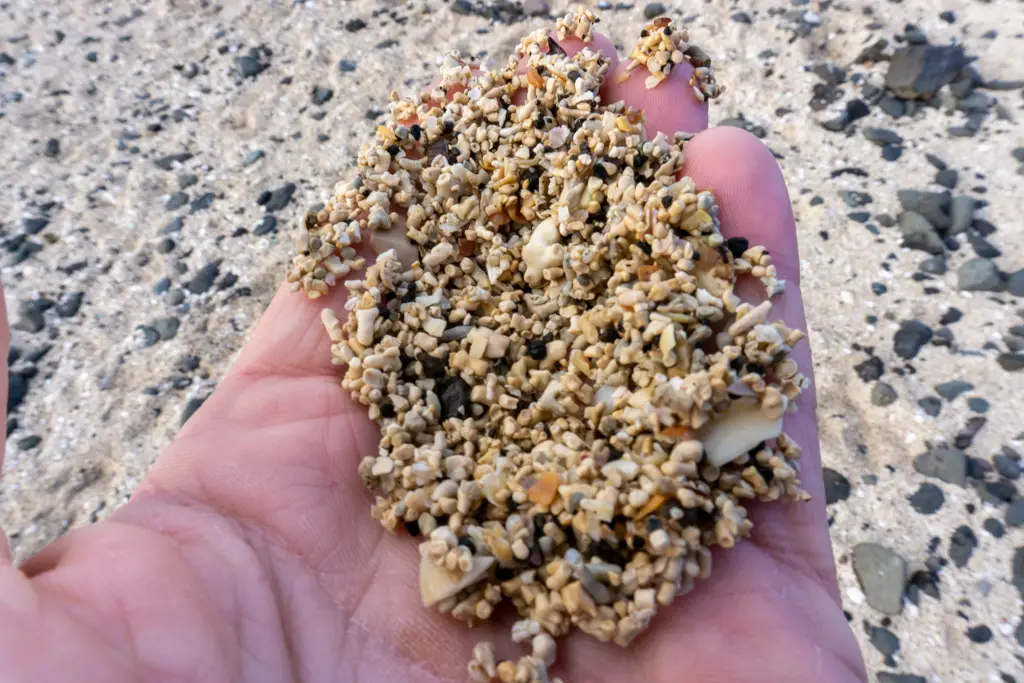
How to get there: The nearest car park is at the end of the single track road in Dunvegan. It isn’t particularly large and fills up quickly so bear this in mind if you are visiting on a busy summer day.
To get to Coral Beach there is a short walk from here, around 3.5 km in total for a roundtrip. It is an easy and well-marked track that shouldn’t pose issues for most visitors.
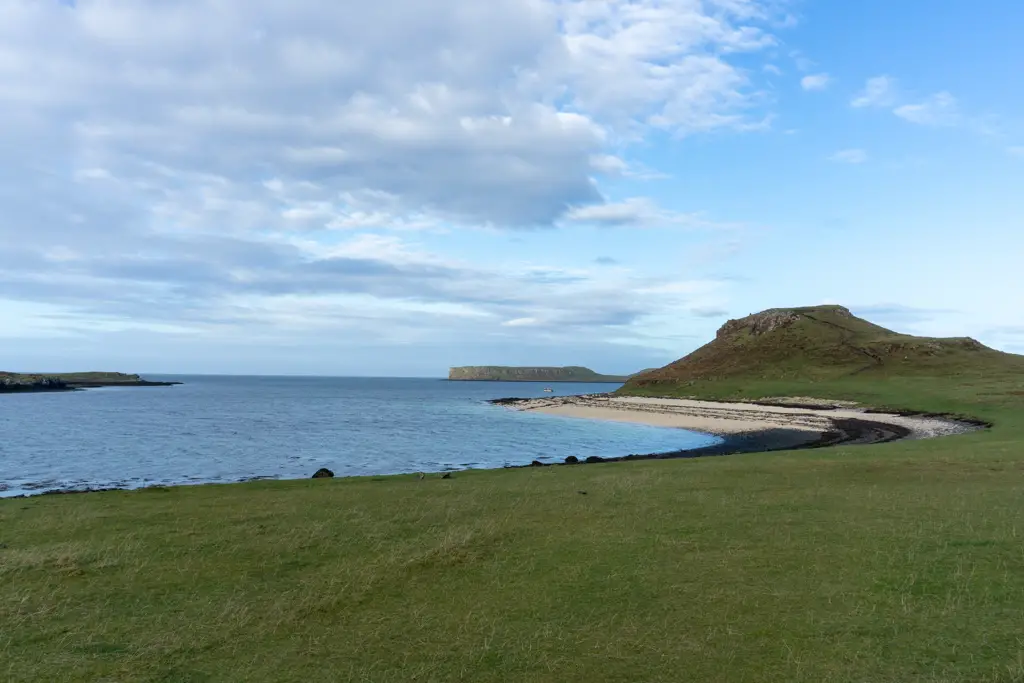
2. Talisker Beach
- Beach type: Sandy
- Great for: Sunset chasers, families, photographers
- Accommodation nearby: Trien Lodge
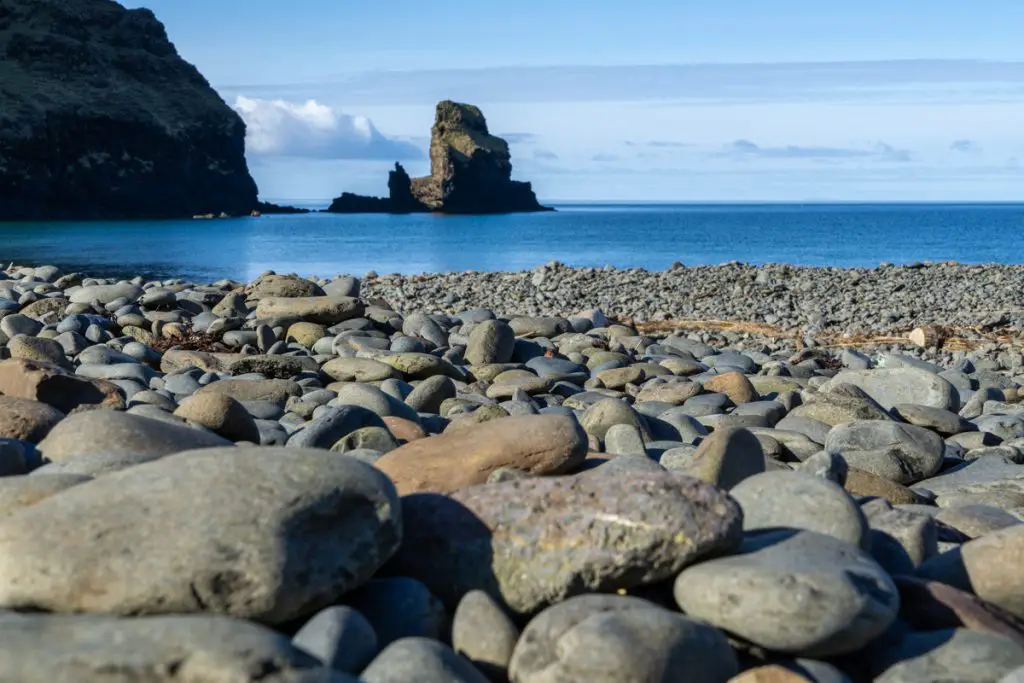
We’ve had the white beach, now let’s talk about the Isle of Skye’s black beach. Talisker Beach is a peaceful spot, recognisable for its smooth black pebbles and large sea stack. On the right-hand side of the cliff, there is a towering waterfall, plunging straight into the sea.
This beach is just a short drive from Carbost, where the celebrated Talisker Whisky Distillery is located. It is set in amongst some dramatic hills which have a lot of character – they look like they could have fallen out of Middle Earth and hold the same kind of magic as those at the Fairy Glen.
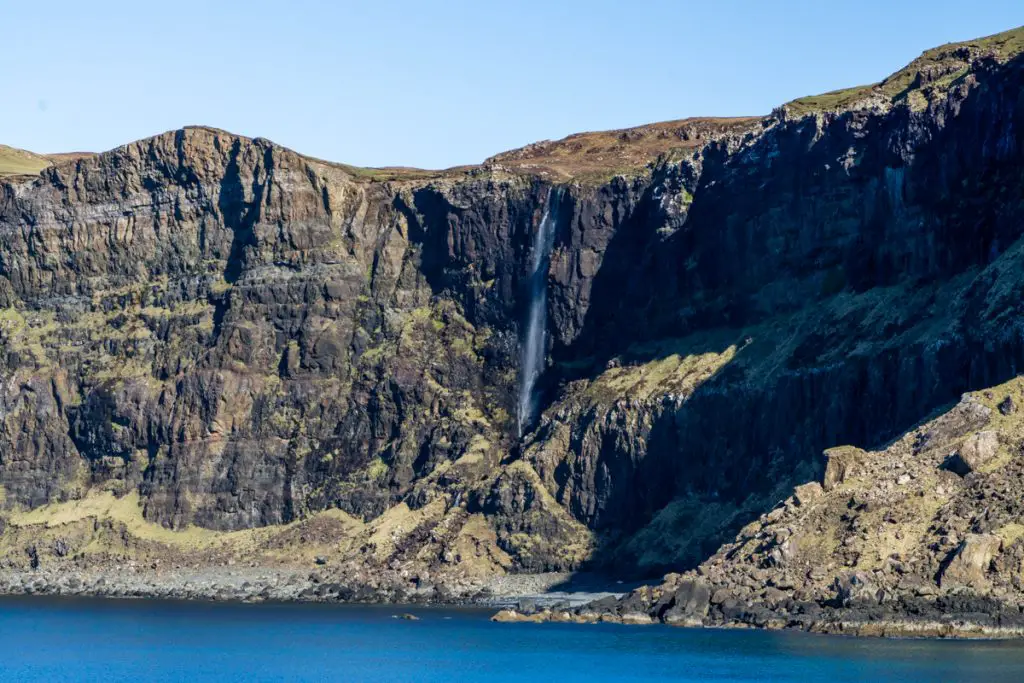
This beach is popular with families and on a warm day, it’s good for swimming. The sea stack on the left can be accessed at low tide by scrambling along the shoreline.
The area of Talisker has also been designated as a site of special scientific internet by NatureScot. This is because of the impressive geographical features of the surrounding rock and also because of the presence of two rare moth species.
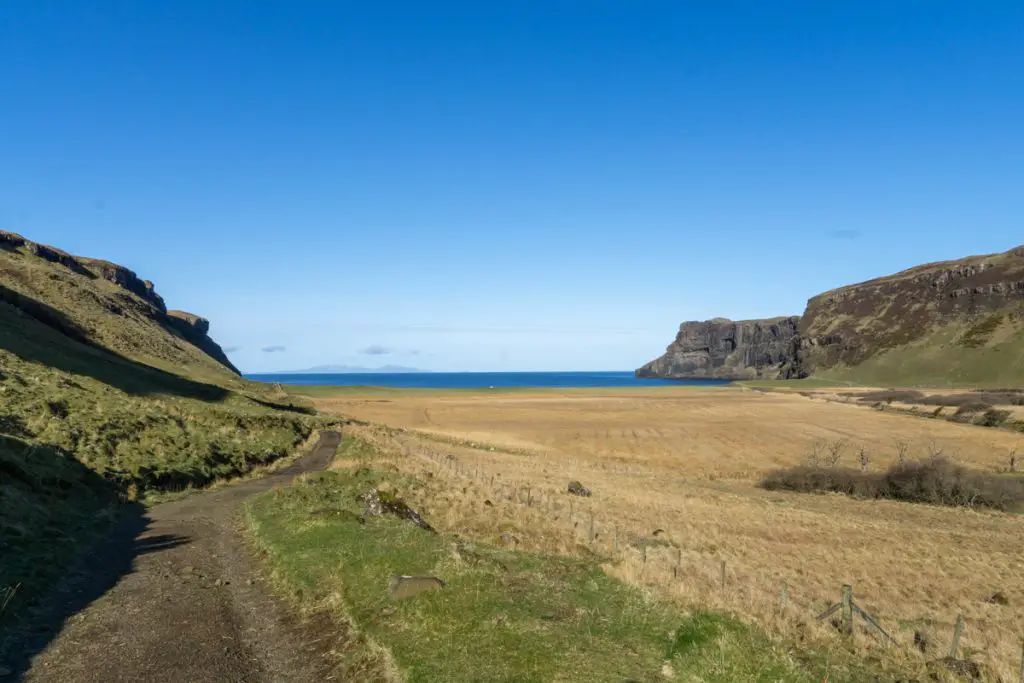
How to get there: There is a small parking area at the end of a single track road. When parking, be careful to allow enough room for a car to turn around. From this area, follow the signs to the beach. The track will lead you through the grounds of Talisker House. As you follow the path through the fields, be aware that livestock is present. Close all gates and make sure you take your litter with you. The round trip walk will take around 40 minutes.
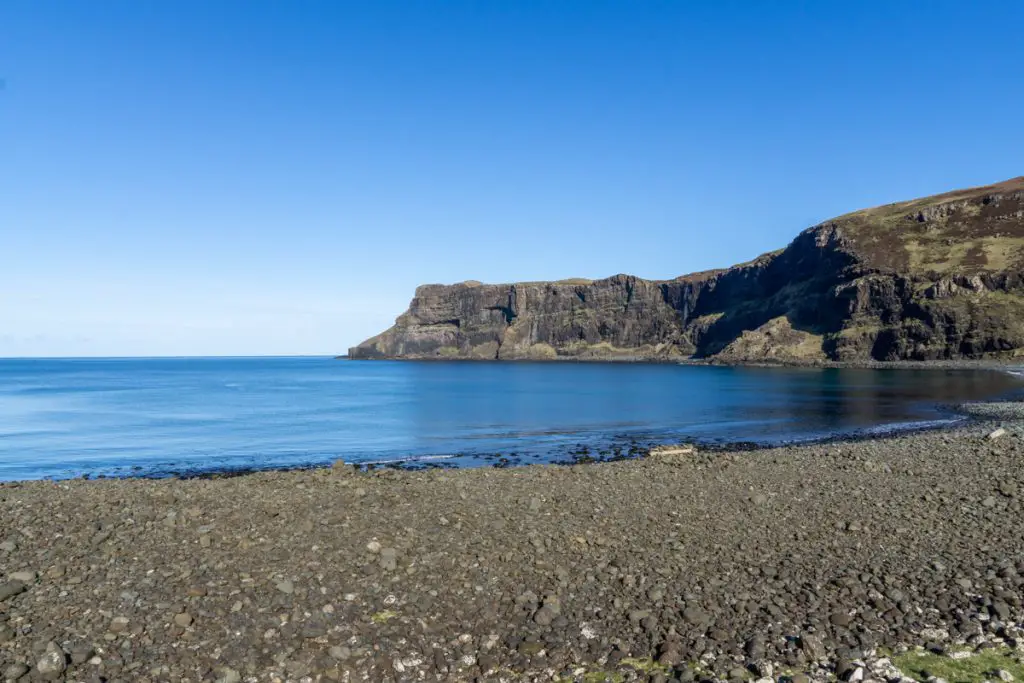
3. Camas Daraich
- Beach type: Sandy
- Great for: Beach bums, wildlife enthusiasts, walkers
- Accommodation nearby: The Inn @ Aird a’ Bhasair
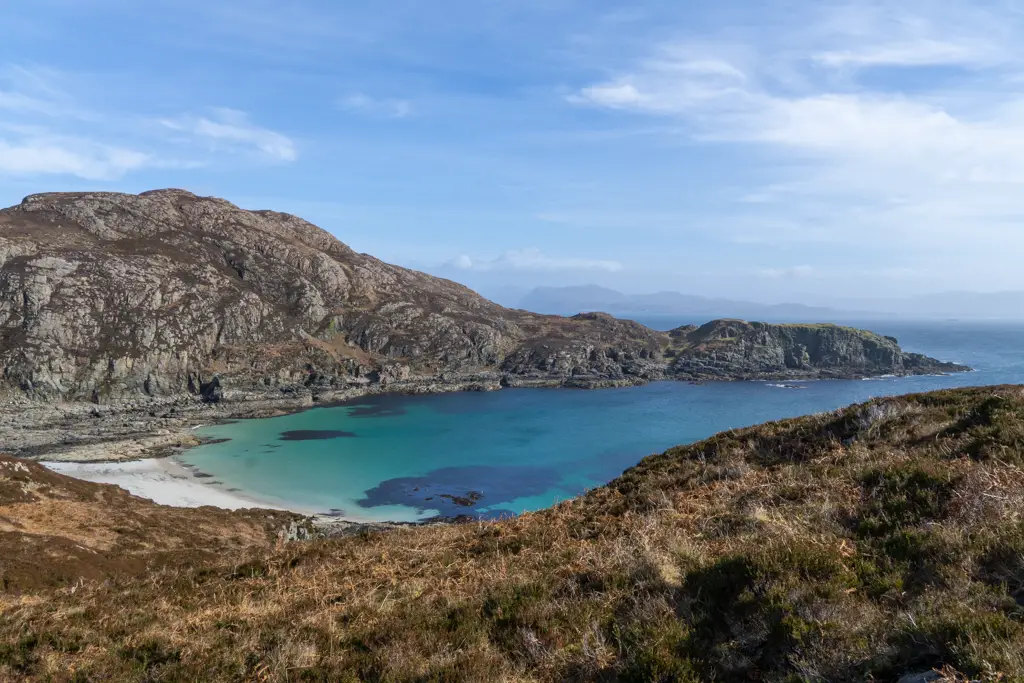
Arguably the most visually appealing of all of Skye’s beaches, Camas Daraich looks like it’s been taken out of a Mediterranean travel brochure. Situated just before the Point of Sleat, the most southerly point on the island, this white sand beach is superbly clean and the turquoise water almost tropical looking.
The bay is relatively small but this adds to the private feeling you get when you’re on the beach. The walk to get there is of moderate difficulty which does somewhat deter crowds. However, it is worth noting that owing to the lack of other sandy beaches on the Isle of Skye, on a hot summers day it is unlikely you’ll have this spot to yourself.
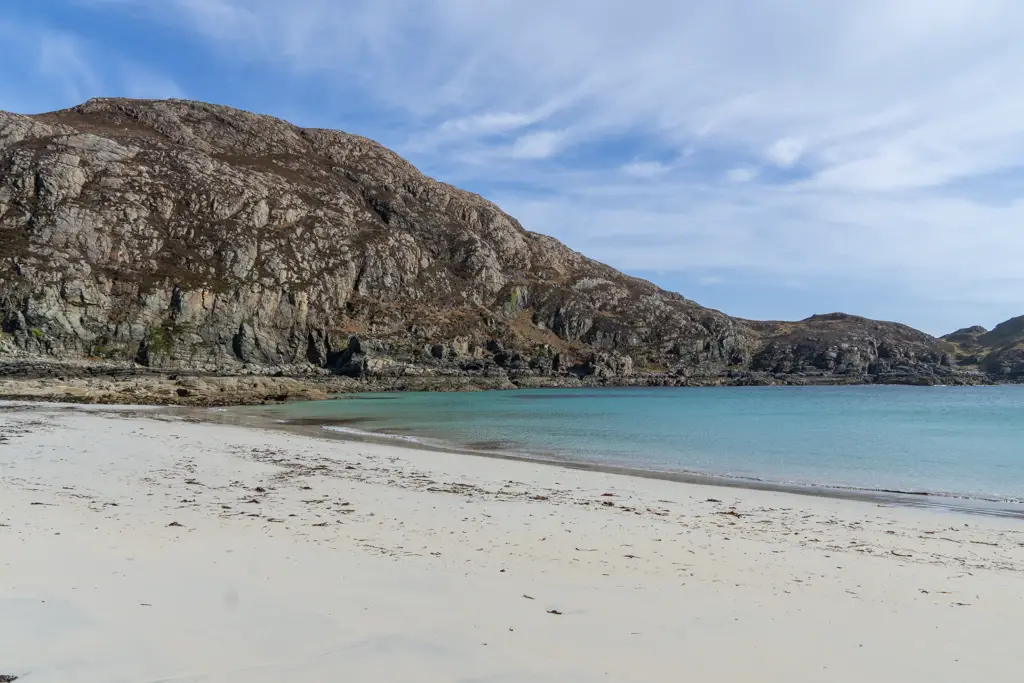
If you can drag yourself away from the golden sands of the beach, it is well worth following the hike to the lighthouse located at the Point of Sleat. This route will take you up and over the bay, offering spectacular views of the beach from above.
Camas Daraich is a great place to swim and snorkel because the water is so clear. Keep your eyes peeled in this area as well because marine mammals such as seals and dolphins have been spotted.
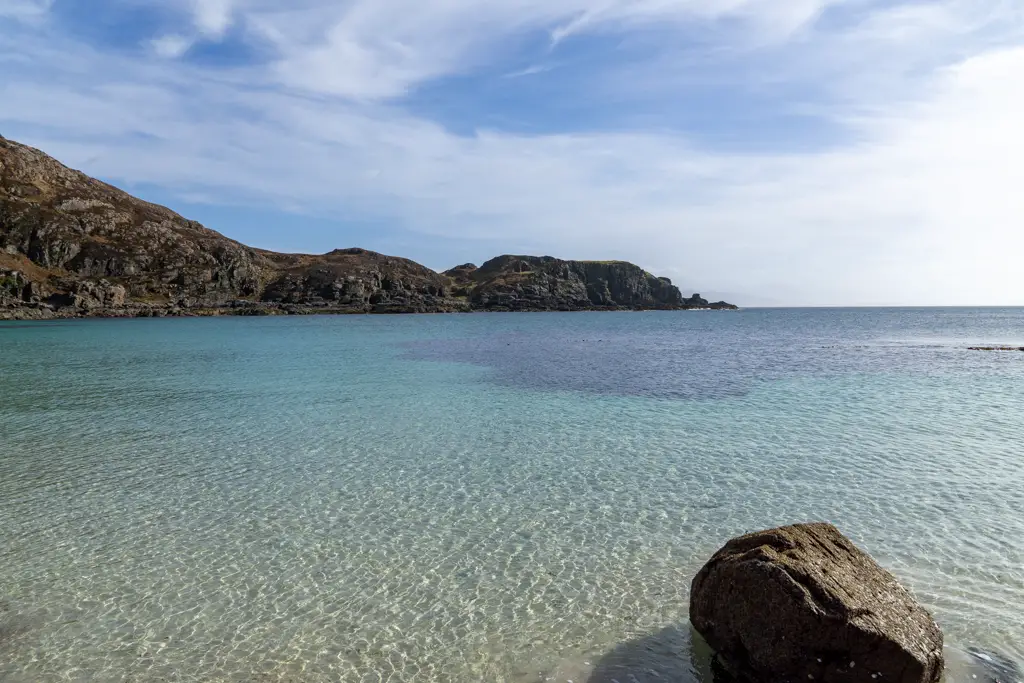
How to get there: The walk begins from the small car park which sits at the end of the road in Sleat. The hike to the beach will take around an hour and there are many boggy sections so make sure you pack your flip flops and wear something more sturdy for the journey!
During this hike, we had to pass by a large herd of cows so make sure you read up on the dangers of cows to hikers so you know how to stay safe. You can never be too careful when it comes to these bovine beasts!
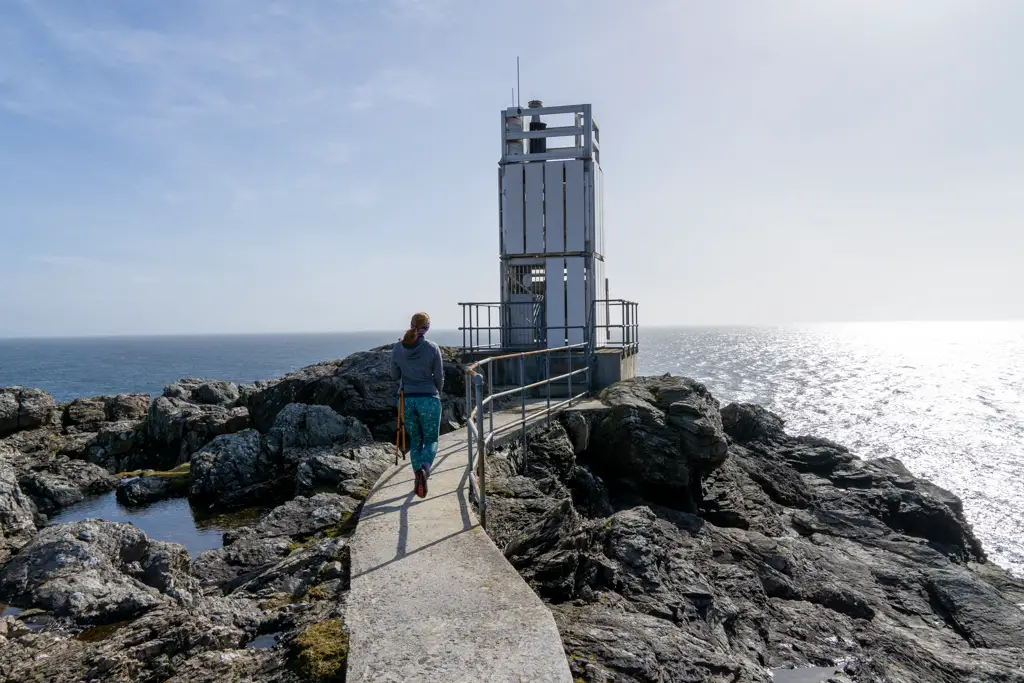
Other Notable Mentions…
Although the previous three beaches are my personal favourites, I wanted to mention a few others that I love too.
Glen Brittle Beach
- Beach type: Sandy
- Great for: Swimmers, hillwalkers
- Accommodation nearby: Holiday Home Eynort
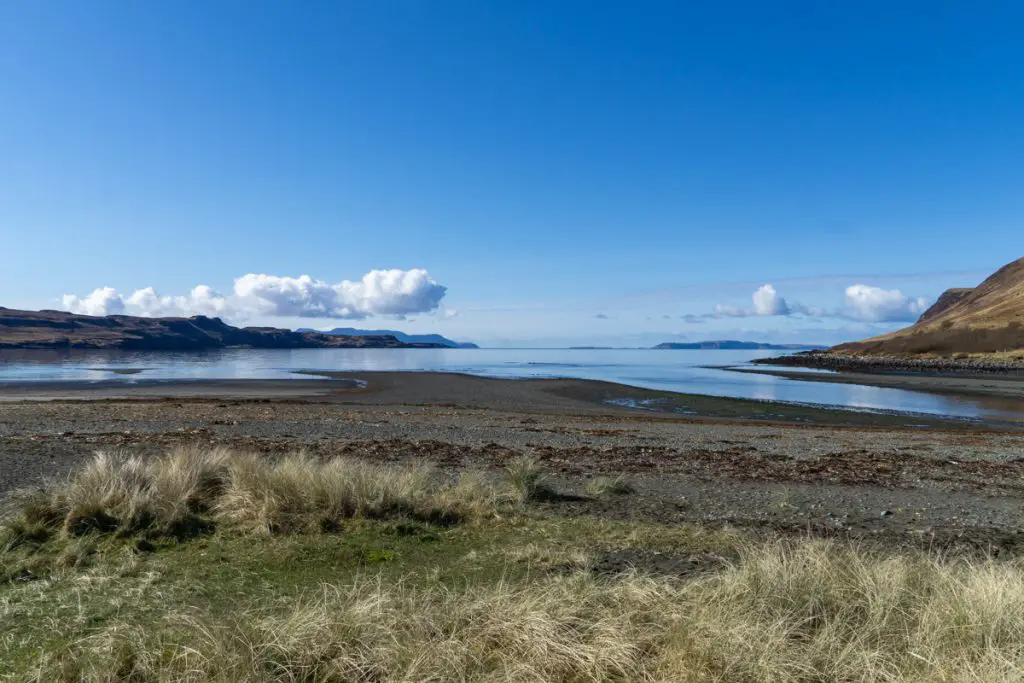
Continuing down the road from Skye’s enchanting Fairy Pools and towards Loch Brittle sits the Glen Brittle Beach. During the summer, this area gets very busy owing to its proximity to the popular Glen Brittle campsite which is owned by the MacLeods of Dunvegan.
It has the best local amenities of any of the Skye beaches as Glenbrittle Campsite & Cuillin Coffee Co sit just opposite. Don’t miss the opportunity to enjoy an ice cream on the beach on a warm day!
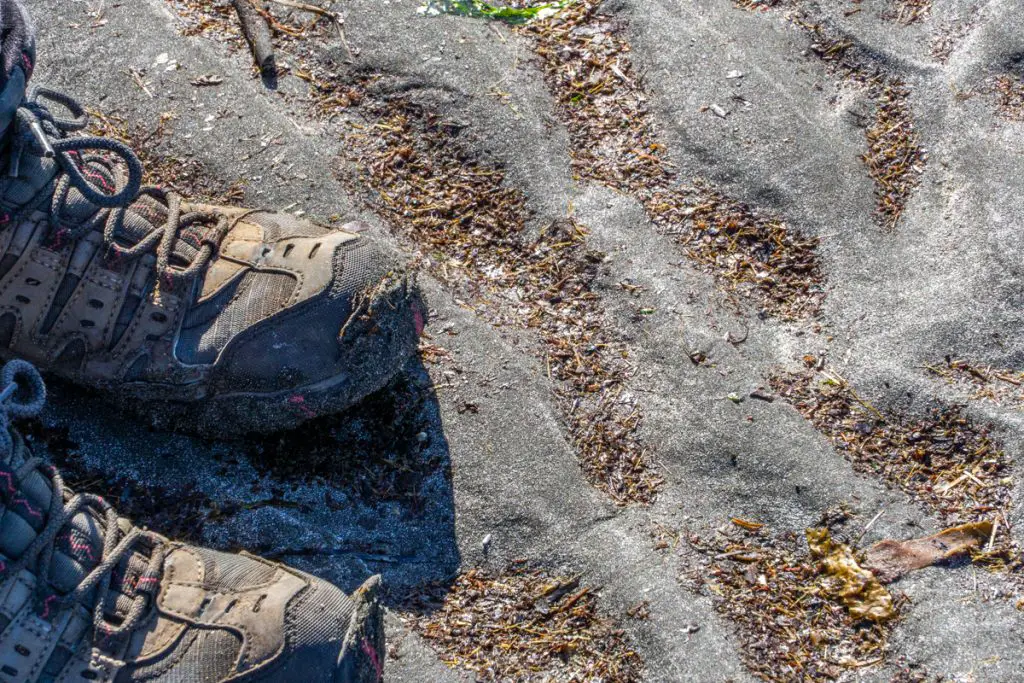
The beach is made up of volcanic sand and sits below the Cuillin Mountains. Sadly, it is a favourite area of the Highland midge so you’ll need to pack your Smidge if you are visiting during the summer months.
The beach is popular with swimmers who sometimes head out to explore the areas around the cliff edge. As the water runs down the mountains, they form waterfalls that drop straight into the sea. These falls make a nice natural shower!
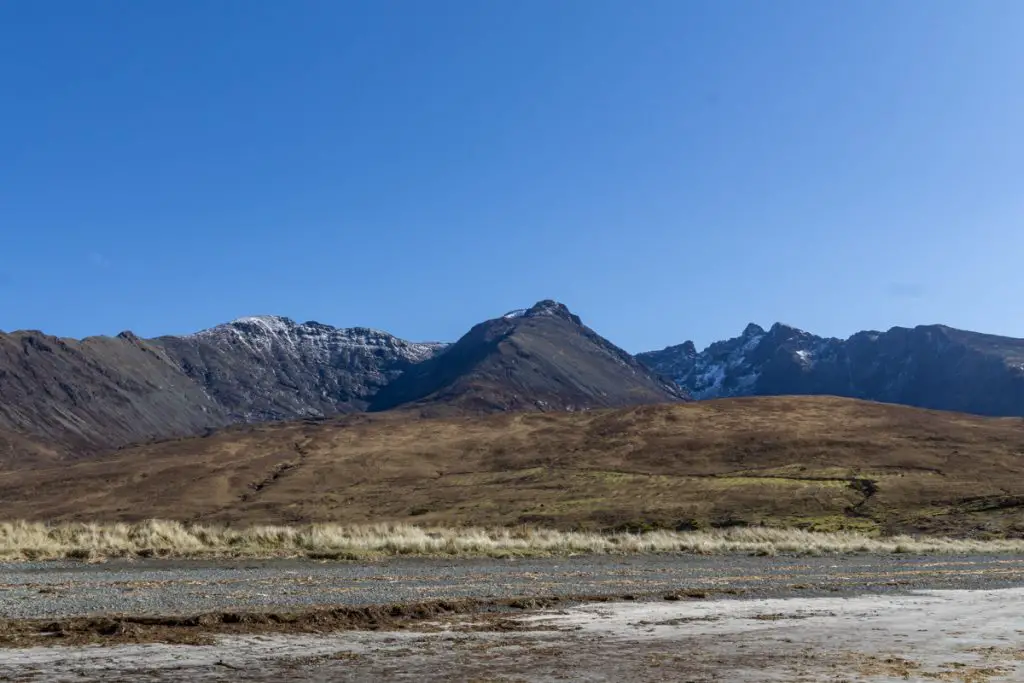
How to get there: Park in the long lay-by near to the Glen Brittle Campsite. Unless you are visiting the Isle of Skye in winter, you’ll want to get here early to ensure that you get a car parking space. The car park is practically next to the beach so it is a very short walk to the sand.
Camasunary Beach
- Beach type: Sandy
- Great for: Hillwalkers, intrepid adventurers, photographers
- Accommodation nearby: Askival
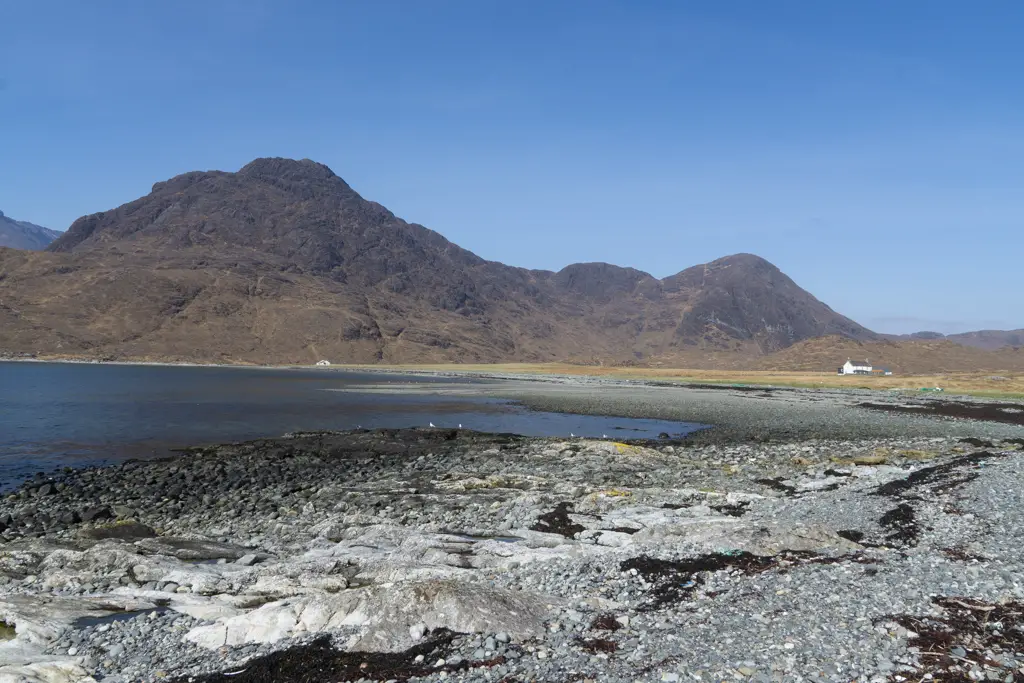
When it comes to epic backdrops, it doesn’t get much better than this. Situated close to the legendary Bad Step and nestled at the foot of Blà Bheinn, Camasunary Beach is one of the best spots on the Isle of Skye. Owing to its proximity to the island’s Munros and the presence of a bothy (a shelter offering basic but free accommodation), this is an area that can get busy with hillwalkers.
The walk to get here is pretty tough for the average walker and there are a few steep descents. The sweat is worth the exertion though! The views over the bay are some of the best on the island on a clear day.
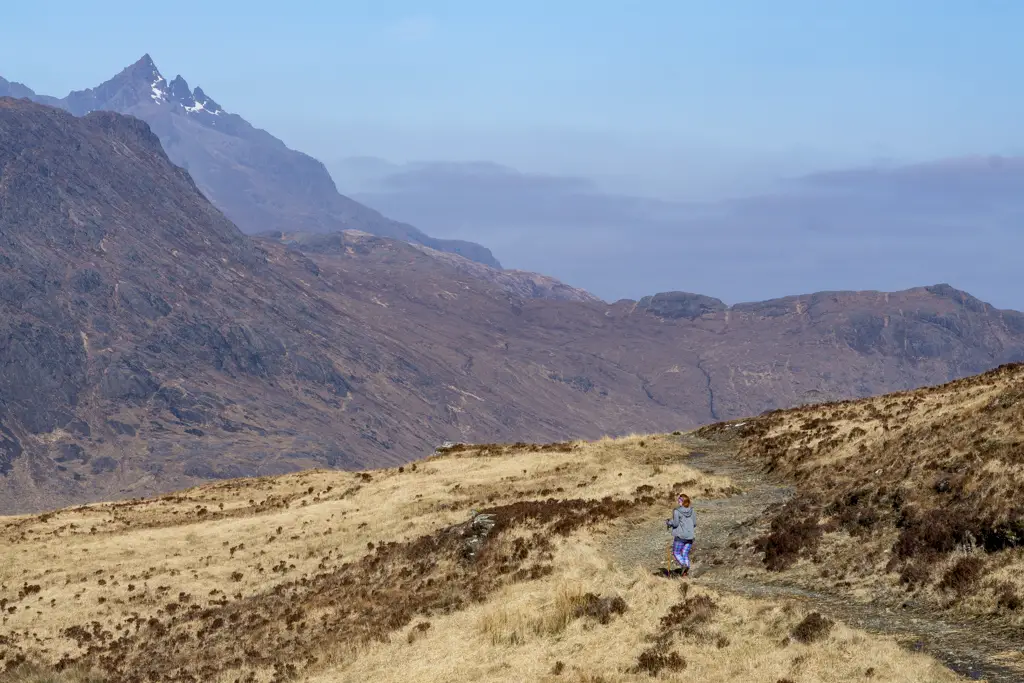
The reason this doesn’t make my list of top beaches on Skye is because of the amount of plastic debris which is washed up here. Sadly, the beach is littered with commercial fishing gear and other plastic waste which really mars the beauty of the landscape.
Huge litter picking bags at provided for free at the bothy in association with Surfers Against Sewage. I urge anybody who has a bit of time to spare, to grab a bag and get involved. This is a great way to help preserve a fantastic space and make things better for the animals and marine life in the area.
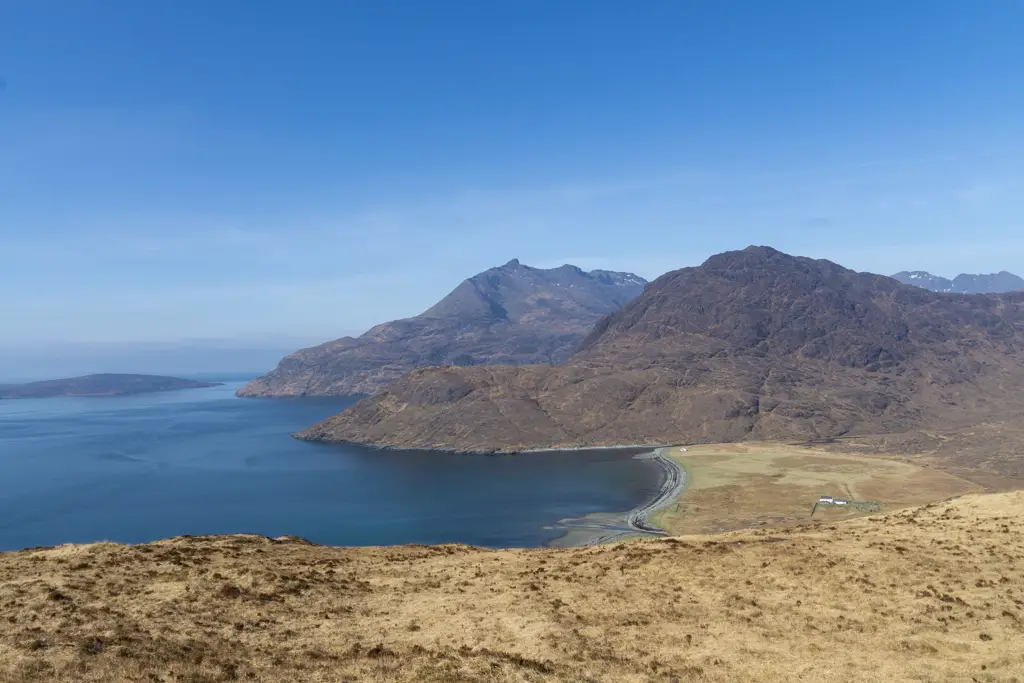
How to get there: The car park is located in a large lay-by on the side of the road which connects Elgol to Broadford. The walk is quite long and traverses some steep undulating rough track. As such, you’ll need to be a decent level of fitness to attempt this hike. In total, the journey will take around two and a half hours out and back.
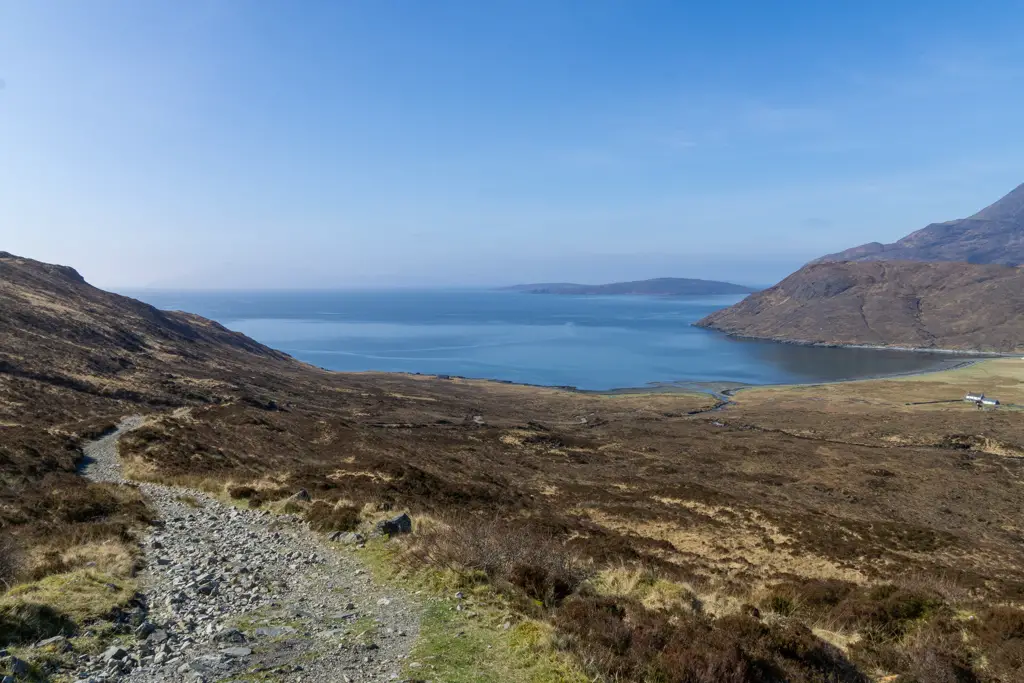
An Corran Beach
- Beach type: Sandy
- Great for: Dinosaur enthusiasts, intrepid adventurers, families
- Accommodation nearby: The Old Croft House
Staffin’s An Corran Beach is situated along the Trotternish Loop in the north of the island. When compared to the other beaches on this list, it doesn’t look very special on the surface, however, An Corran is actually a site of huge historical importance.
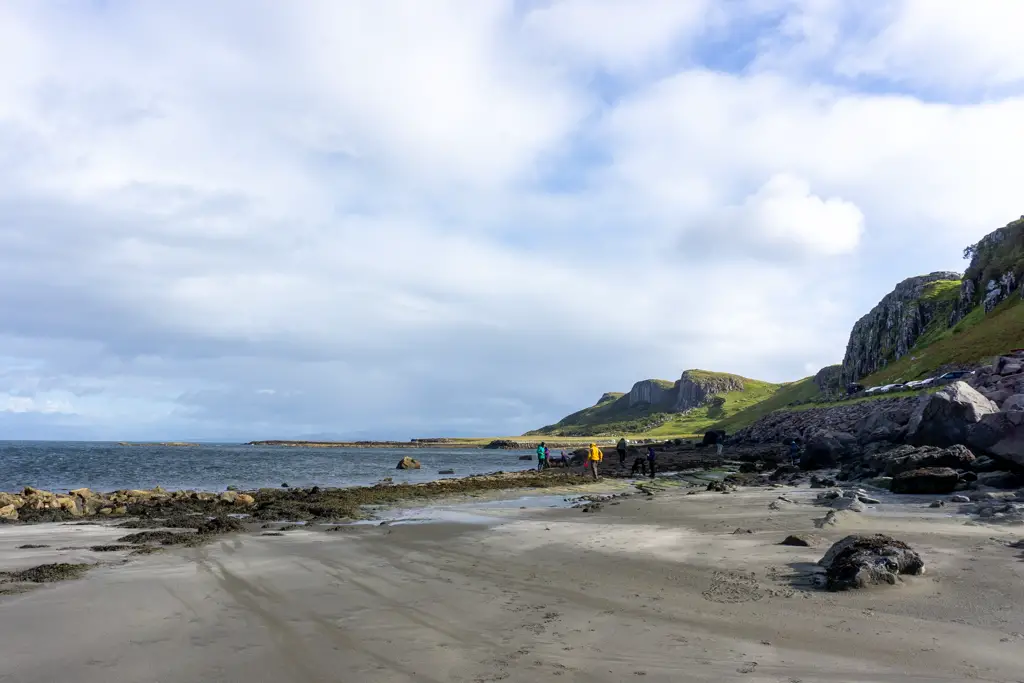
Dinosaur footprints, believed to have been from a range of Ornithopods have been found in this area. In fact, there are so many different types of dino prints on Skye that the island has been dubbed the Dinosaur Isle!
I’ll be honest with you here, I’ve visited all the areas where prints have been found and have never seen any firsthand. They are notoriously difficult to spot! To increase your chance of seeing the dinosaur footprints on the Isle of Skye, make sure you time your visit to An Corran with low tide so that the rock is exposed.
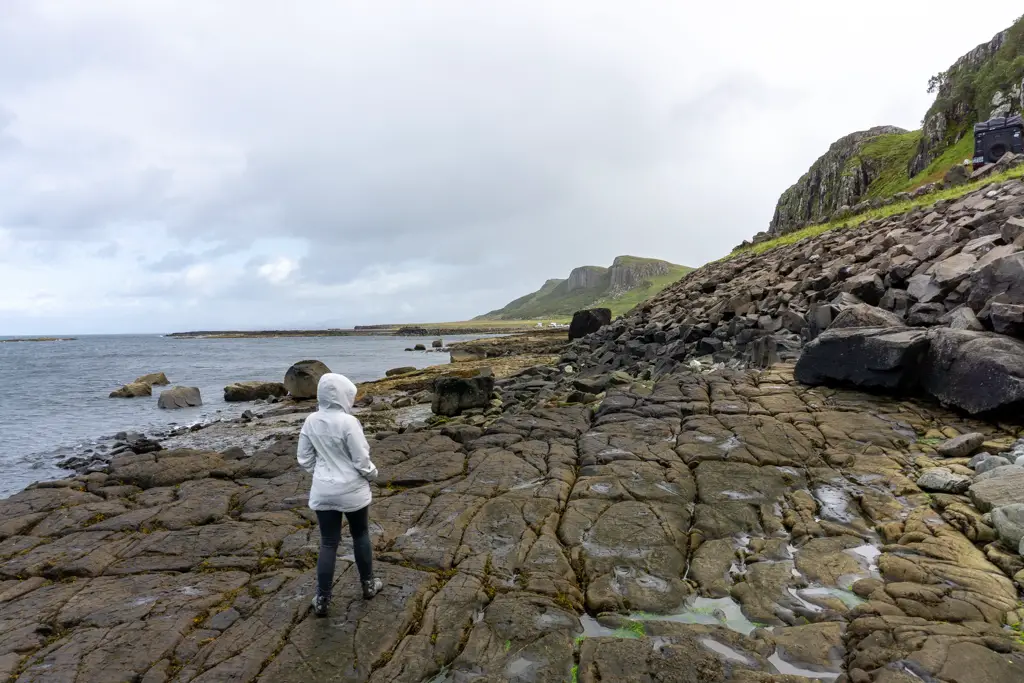
How to get there: Head toward Staffin and take the turning off of the main road marked slipway. This will take you to a small parking area where it is possible to make your way down to the beach.
Visiting Skye’s Beaches: FAQ’s
Do you have to hike to reach all of the beaches on Skye?
Most of the beaches on the island require a short hike to access them. The huge positive of this is that the journey deters many visitors which leaves the beaches quieter. The only two beaches featured in this article where there isn’t a hike to get there. They are An Corran Beach and Glen Brittle Beach.
Can you wild camp on the beaches on the Isle of Skye?
Thanks to the Right to Roam laws in Scotland, nearly all of these beaches are open to campers. The only one which isn’t is Talisker Beach. There are signs around the beach and track from the landowners requesting that people don’t camp in the area.
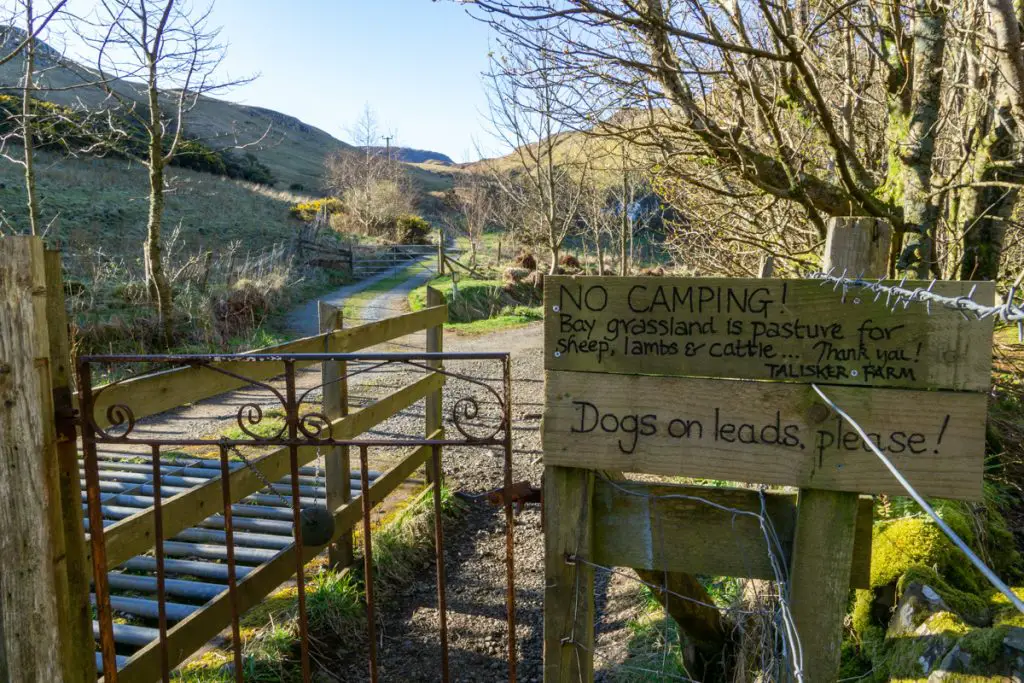
Are the beaches on the Isle of Skye dog friendly?
Pretty much all of the beaches on Skye are dog friendly in that dogs are allowed on the beach. However, livestock roams freely in many of these areas so pet owners would be advised to keep dogs on a lead at all times.
What kind of wildlife can I see on Skye’s beaches?
There is an array of wildlife on the Isle of Skye and many creatures are regularly spotted on the island’s beaches. To increase your chances of spotting something, remember to stay quiet when possible, keep your eyes peeled and do your research about a specific destination prior to visiting.
On the Isle of Skye, you have a chance of seeing the following:
- Sea eagles
- Golden eagles
- Seals
- Shags
- Razorbills
- Gannets
- Dolphins
- Whales
- Cows (including Highland coos)
- Sheep
- Otters
- Red Deer
Have you visited any of these beaches on Skye yet?

